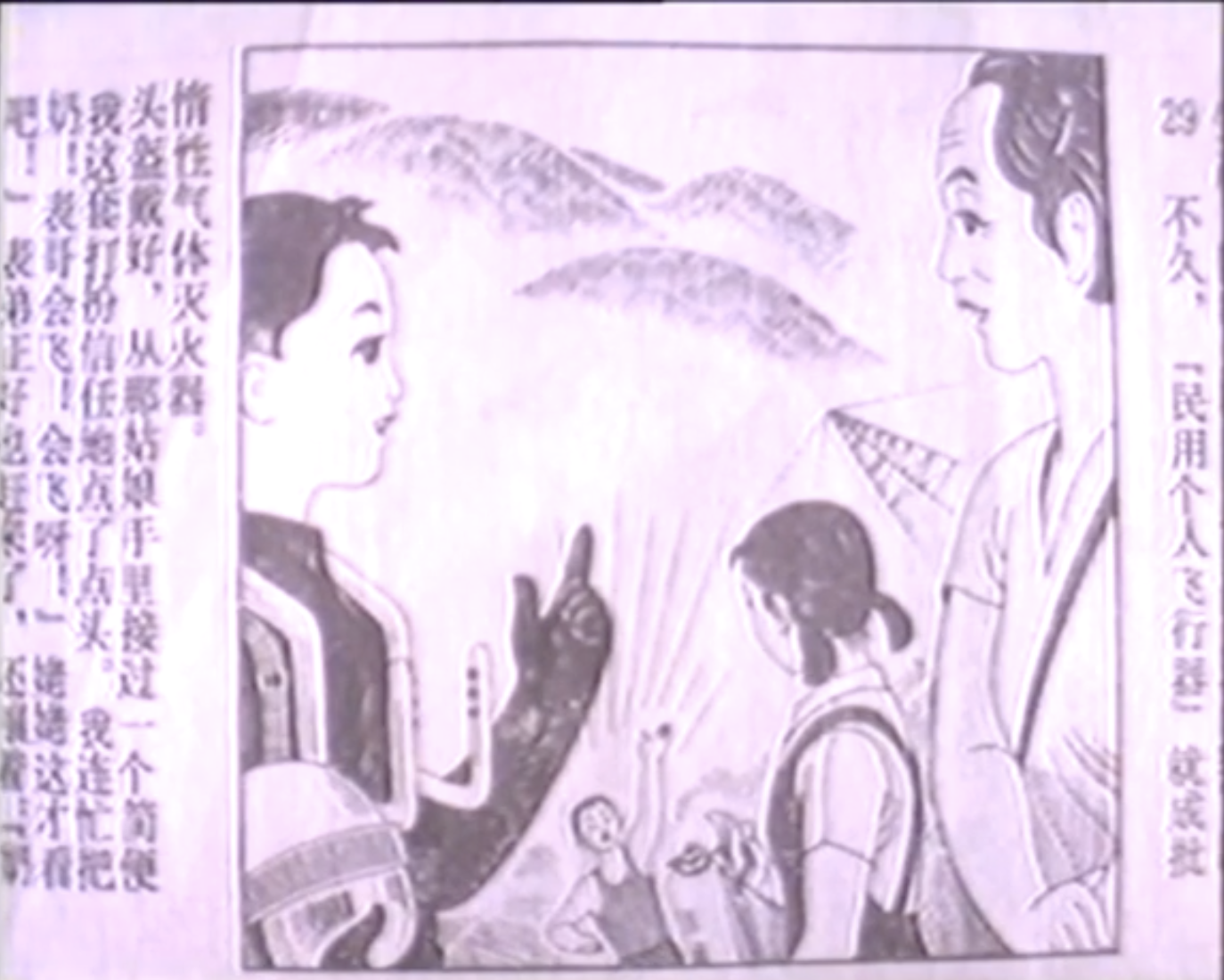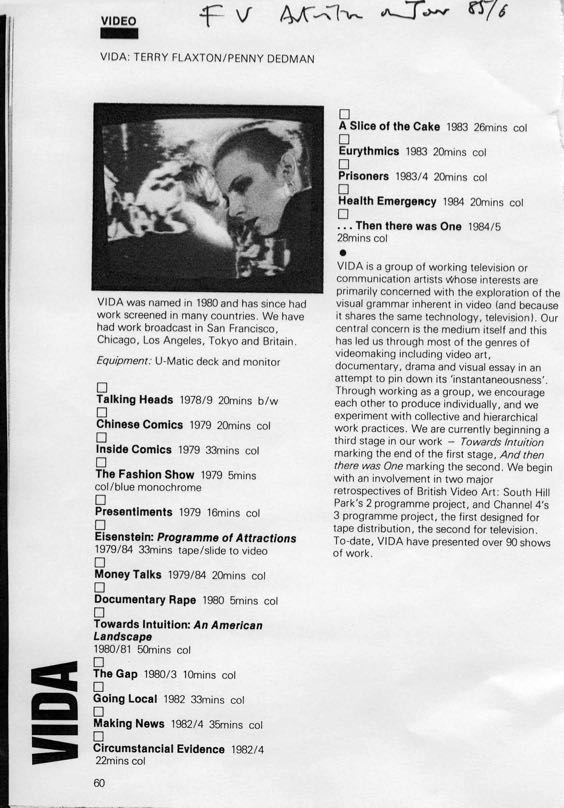Chinese Comics

Creator:
Flaxton, Terry-
This work is part of the rewind archive.
Duration: 18m 27s
Year: 1977
Media types:Video
I think the first bit of video I was involved in was in 1976. I’d shot film before in 1971. But my art practice started around ’76. We made a few pieces, one was called U2 38 which was a very early promo. It was a punk anti-nuclear promo, which was a combination of film and video and then we made Presentiments, which was looking at the way in which you read the screen, how you read duration, when are you bored, why are you bored, what does boredom mean, what happens after the moment of boredom, all that stuff. It wasn’t
as stringent or pure as some of the work that was going on like those all day things or John and Yoko sleeping for 8 hours. This was a piece that was looking at the way that you read. You encode or decode stuff. Then we did a couple of documentaries because we wanted to try to begin to understand the documentary form. We did one on Chinese comics, which is how the comic form was used in Chinese propaganda. We did one on comics when I had my first moment of the media canon. It was 1977, and I found a guy called Neil Adams who drew Superman, then discovered Siegel and Shuster on the door
at DC Comics. He took DC to court to get him a pension because they had invented Superman, but they were just working guys on the door, literally doormen. It was a terrible situation. Anyway I’d made the programme, we made the programme, VIDA, on comics, and then I took it up to Arena who said they weren’t interested, but 3 months later it was on. So, there’s my first moment of media engagement, read of that what you will. So we
did some documentaries. Then Talking Heads happened and that was when we wanted to rip apart the documentary, we wanted to articulate, tried to articulate what’s going on. Then we did Money Talks, we really started ripping apart our practice at that time. It was an unfinished piece, it still is unfinished, but it’s better as an unfinished piece because we’d got to the point where we destroyed it. We ripped it to bits and destroyed it. But I still like the piece. We did a piece on Eisenstein called Programme of Attractions about what formed him, why he was neurotic about film. REWIND Interviewyoutube link https://www.youtube.com/watch?v=wMfOryvUR6k
updated April 2022 SP
-



